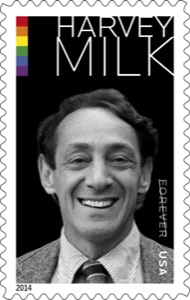
Looking at the carefree young faces celebrating Pride, I couldn’t help remembering the world we faced at that age. My thoughts drifted to Harvey and the killings. The above phrase came to mind and I was sadly aware many young LGBTers have no idea it refers to Harvey Milk whom I hope they know was one of the first openly gay men elected to public office. He was killed in 1978 along with San Francisco mayor George Moscone.
Harvey was a courageous front-runner in our struggle and the street in front of The Center is named after him. This year a U.S. postage stamp bearing his portrait was issued.
As for the Twinkie defense, it was part of the hoopla surrounding the trial of the man charged with the murders, Dan White. With several witnesses to the killings, the verdict was obvious, right? Wrong. In those days there was little sympathy for anyone gay and “murder” was a harsh, ugly word. Seniors remember our disbelief when the defense argued his client was not fully responsible for his actions because he had been eating too much sugar-laden food such as Twinkies and this had caused a temporary personality change. Crazy? Like a fox.
Sure, he was found guilty, but of the lesser “voluntary manslaughter.” For the deaths of two innocent people, he got a seven year sentence and was out in five. Jokes and comments abounded about what soon became known as the Twinkie Defense. How everyone laughed, except the LGBT community. Justice was somehow not the same for us as for other people. Now, after 35 years, the United States government has attempted, over strenuous objections from the right and the usual Christian zealots, to make amends with the issuance of the Harvey Milk postage stamp.
I am not sure if this has healed any wounds, but for me, it was a momentous event to celebrate this year and one I am trying to accept as a gesture of repentance.
Lesbian slang vs. gay slang
When LGBT people tell stories and jokes within their sexual families, the slang-filled conversations often leave members of other groups in the dark. At a party recently, I overheard a group of lesbians, but failed to comprehend a slang-filled tale of (I think) rejection and seduction followed by raucous laughter and knowing nods. I then realized I had just done something similar with a joke to a group of gay guys. It involved the star of many a limerick the popular young man from Pawtucket, drunken bear cubs and ending with a clever word-play referring to the well-known fable of the gay whale and the pineapple (or English muffin in the notorious lesbian version).
Lamenting the fact our LBGT vocabularies can’t be enjoyed by all, I vowed to improve the situation. I Googled “lesbian slang” and was amazed at the long list of terms.
For me, several of the definitions needed definitions. The same may be said about the “gay slang” list which had many puzzling entries including some too specific within various sub-communities to be understood (or believed!) by outsiders.
The wonderful creativity of the language found in both lists energized my desire to incorporate these new-found terms and phrases into my articles and jokes. Unfortunately, it proved more difficult than I thought. One side or the other was usually confused and explaining took the punch out of the punch line.
By combining terms from both sides, I had hoped everyone would at least get the gist of the story. Alas, my crusade to create inter-group humor failed. For example, I retold my whale story, but people received the final zinger with a long, silent pause followed by a few feeble laughs before everyone fled.
I still found it hilarious, but like the tree falling in the woods, if no one laughs, is it funny? On reflection, I may have erred in changing the lad from Pawtucket to tea-bagger and pineapple to bean-flicker.











